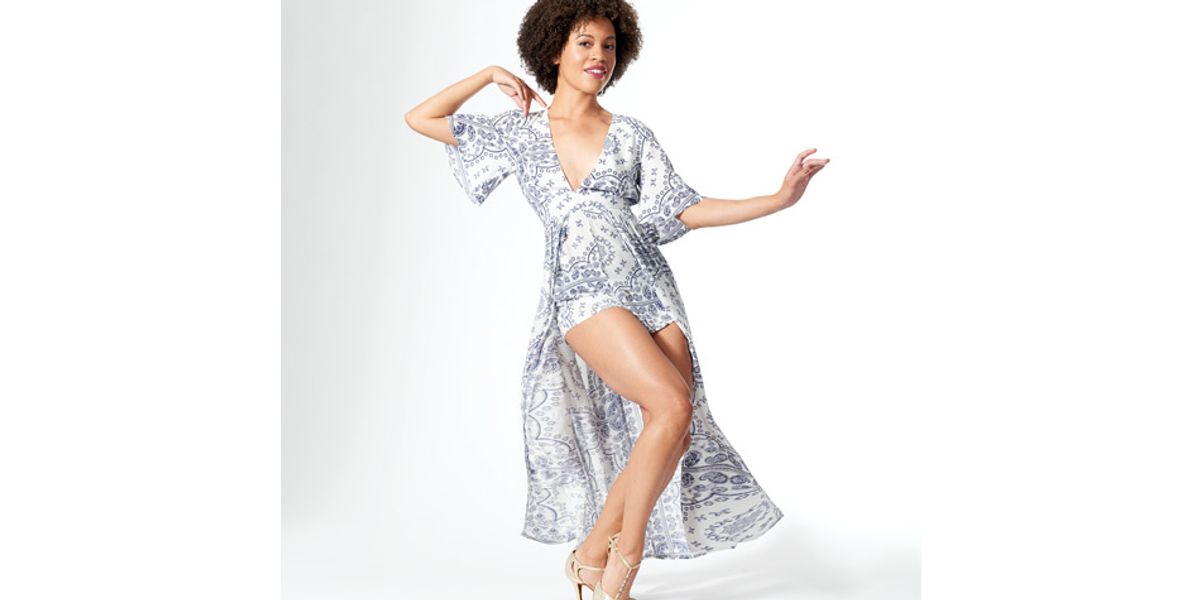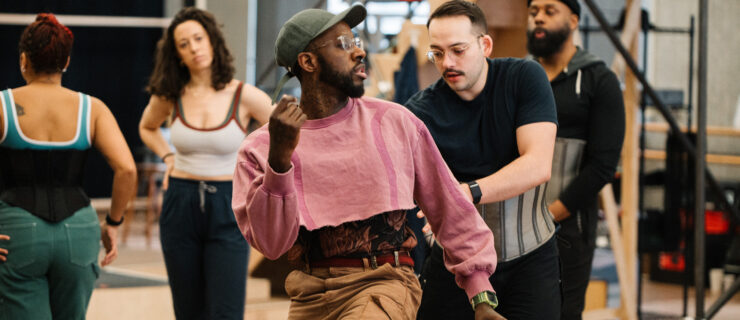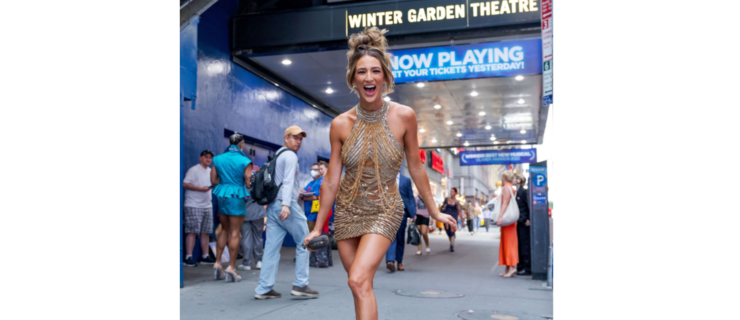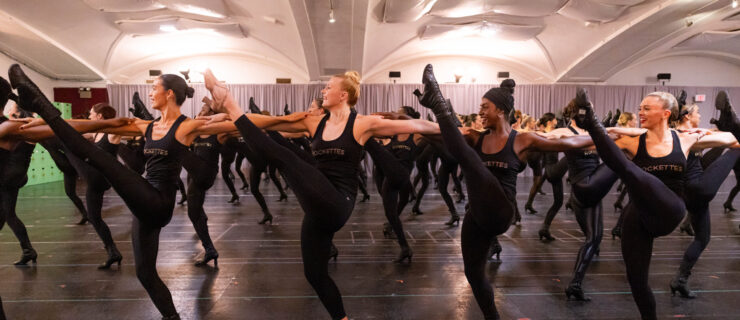What It's Like to Understudy 3 Principal Roles in Broadway's Revolutionary Oklahoma! Revival
It’s one thing to understudy three different demanding principal roles in one show. But sometimes, Sasha Hutchings has to perform them all in one day.
Hutchings, a Broadway dancer who originated an ensemble role in Hamilton and was recently seen in “Fosse/Verdon,” understudies both Laurey and Ado Annie in the current Broadway revival of Oklahoma!—plus the lead dancer, who performs the 13-minute dream ballet practically solo. Though she hasn’t performed the dream ballet yet, she rehearses it every Friday, right before rehearsing the whole show as either Ado Annie or Laurey, then sometimes performing one of those roles in the evening show.
“As soon as I’m done rehearsing the dream ballet, I have to let that fade in order to fully immerse myself in Laurey,” she says. “And if I ran Laurey earlier in the day and I’m watching her scene as Ado Annie, I have to let go of her lines. Once you start going down the thought pattern of that character, it takes you to a whole other place.”
We talked to Hutchings about the mental and physical gymnastics of understudying three such distinct roles—and how her dance training helps her do it:
On Playing the Show’s Foils
How do you switch between two characters who are so diametrically opposed? For Hutchings, it’s been about finding ways to relate to both Laurey and Ado Annie, and putting their journeys within the larger context of the show. “These two women are coming of age when their state is coming of age,” she says. “It’s this exploration of, what are the rules, how am I able to operate in this new nation?”
“They go about it in different ways. Ado Annie is fully free. She’s like, I want everything and I don’t understand why I would have to say no. With Laurey, she’s very focused on what is the correct thing to do. I relate to the tentativeness; feeling like whatever decision I make is going to determine the rest of my life. But I enjoy embodying Ado Annie’s spirit; just following your instincts and really living in the moment.”

Courtesy Hutchings
On Understudying Ali Stroker
When Hutchings went on for Ado Annie for the first time—just a week after the show opened—she had never rehearsed the role until that morning. (She credits her background as a dancer for helping her remember blocking and stage patterns. Having experience as a swing in Memphis and understudying the Peggy/Mariah track in Hamilton didn’t hurt, either.)
Now, she’s on for Ado Annie at least twice a week for matinees, as well as the occasional last-minute performance. Over time, she’s learned how to adopt the role for her own physicality (Ado Annie is normally played by Tony-winner Ali Stroker, who uses a wheelchair). “There are capabilities she has that I don’t,” Hutchings says. “As a dancer, I had to figure out how to not be completely aware of my body because Ado Annie is coming of age so she doesn’t know how to work all of these things.”
Understudying Stroker has helped Hutchings see new layers of meaning in the show. “It makes for such a rich experience, being a person of color covering a white woman,” she says. “Oklahoma! is not about race, but there are times where we allow that to be a storytelling moment. I’m not being asked to do Ali’s performance. We have conversations about what it means for me to be onstage.”
On the Unfamiliarity of the Dream Ballet
Hutchings has an impressive resumé as a musical theater dancer. But the dream ballet, choreographed by John Heginbotham, isn’t exactly your typical musical theater fare.
“It’s a bit of a different world for me,” Hutchings says,”coming from musical theater and working with people like Andy Blankenbuehler who will explain every movement. The process is a little more free and you’re able to find things for yourself.”
Leaning into that unfamiliarity helps, says Hutchings, because the character—Laurey in a dream state—is also uncovering new feelings. “Dream Laurey is trying on these different ways of being in her sexuality,” she says. “It feels foreign, but that’s how it’s supposed to feel. It’s nice to get out of my comfort zone and go back to my dance roots.”
On Letting the Text Guide Her
As revolutionary as this Oklahoma! is, none of the words from the original script have been changed. This revival seems to expose new meaning in the original text by lingering on the words—sometimes too long for comfort.
This focus on words has helped Hutchings dig deeper into her roles. “I try to make sure that as I’m speaking the lines, I’m letting them reverberate through my body,” she says. “Even in the dream ballet there are lines from the show that inform some of the movement.” At several points in the first act, Laurey and Ado Annie use words like “shakey” and “shiver” to describe how they feel when they receive attention from men—she channels those lines during moments in the ballet.
On Refining the Characters’ Movement
Naturally, as a dancer, Hutchings has been focused on how her characters move through space. “Laurey is a little more reserved about the curves she has,” she says. “She’s aware of what that does to men but I don’t know that she’s completely comfortable with that attention. There’s a groundedness and a strength and maybe even a masculinity. With Ado Annie I find myself sitting in my hip and chest out and open. For Laurey, she’s just stacked on top of herself. She has a bit of a a fighting stance, she’s prepared for anything.”
The character’s physicality also helps her to tap into them when she’s had to run multiple roles in a day. “Finding a grounding movement or posture can help me be like, this is where we’re at right now,” she says. “If it’s my first stroll as Ado Annie or the first stance that I take with Laurey, letting that completely take over.”




